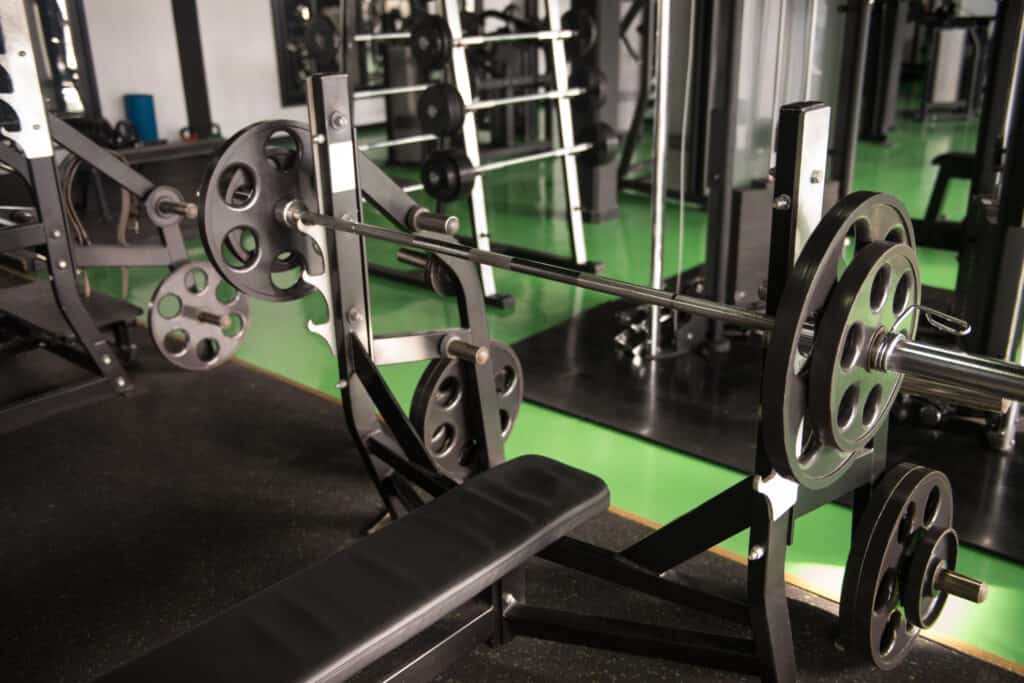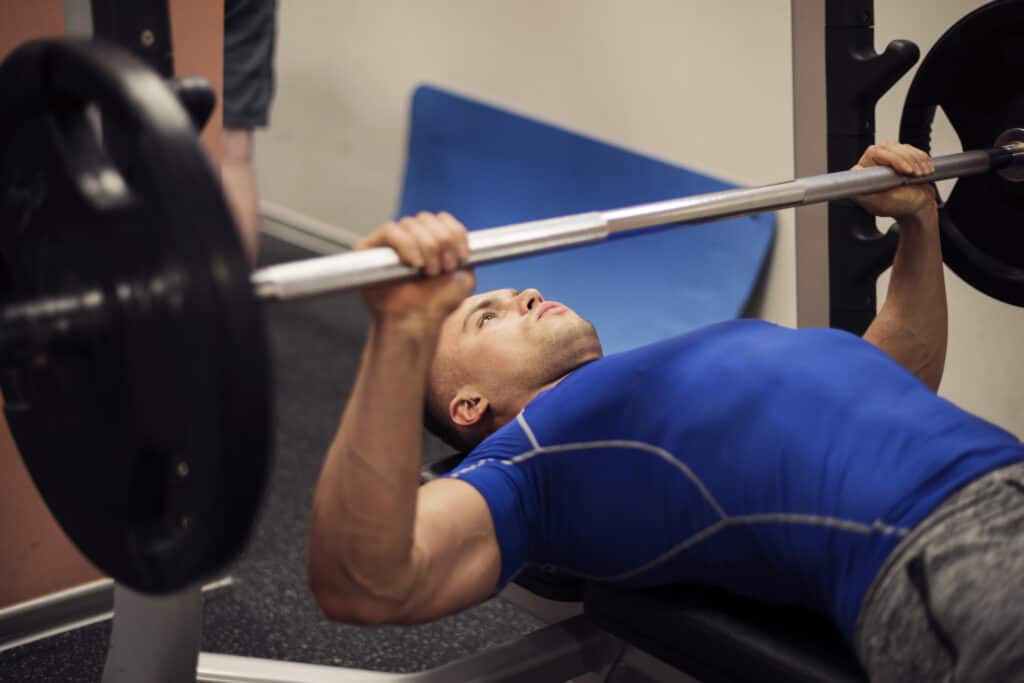One of the most often performed exercises in any gym is the barbell bench press. It is important to mix in, periodically, barbell incline and decline bench press exercises with your flat bench. Each of these exercises can be performed with dumbbells or on machine equipment, in addition to a barbell. There are other barbell bench press exercises that are available as well. These include wide grip, close grip and reverse grip bench press. This article, however, will concentrate on the “big three” barbell variations.
Benefits of Barbell Bench Press
Adding barbell bench press to your strength training routine is not mandatory in order to get stronger. It is a fantastic compound exercise, though, associated with many benefits. These include:
- A great upper body strength exercise that works multiple muscle groups.
- Develops bigger and stronger chest muscles (bigger pec major & stronger pec minor).
- Secondary muscles, like anterior deltoid serratus anterior and triceps, also get stronger.
- The exercise is a great strength predictor. Read this research study for more on this topic.
- This exercise is an important part of overall strength assessment (1-RM bench press or # of repetitions using either 185/225 pounds).
- Will improve bone health as a result of regular use. Read research study here for more information.
- Pushing power for other exercises is improved.
- Improves joint health in the shoulder, elbow, wrist and sternoclavicular.
Flat Bench Press
The barbell bench press is a staple in just about every workout, from an athlete to novice gym-goers. There are many reasons why. But basically, it has a proven track record….it works! When you want to build or increase muscle strength in the chest area, simply manipulate the training load and you have one of the best upper body exercises available.
Researcher has shown 20 percent more weight can be pressed with a barbell compared to a dumbbell. In addition, they found that although there was little difference in muscle activity of the pectoralis and deltoid muscles for both exercises, the dumbbell bench press used less triceps and more biceps. For more information on bench press including set-up and proper technique, see “exercises” in Jefit app.
Incline Bench Press
This exercise variation is typically performed on a 30 to 45-degree angled bench. As a result, more of the upper pec is stressed. Research shows both options, 30 and 45-degrees, are best in terms of muscle activation. See the two research studies here and here. Hand position in this – and other two chest exercises – will also change the level of muscle activation for the chest and triceps respectively. See how to perform incline bench press correctly using the Jefit app.
Decline Bench Press
Typical set up for this exercise is 15-30 degrees for the decline bench. This angle places your upper body on a downward slope, which in turn, activates the lower pectoral muscles as you push the weight away from your body. Compared to other types of bench press exercises, the decline version is less stressful on your back and shoulders. This is because the decline angle shifts the stress to your lower pecs, forcing them to work harder. Of the three exercises discussed here today, the decline bench press is probably third in line in terms of popularity. Case in point, in the Jefit exercise database, Flat bench in #1 (with >1.75 million downloads), incline bench is #2 (1.48 million downloads) while decline is #3 (only 148,000 downloads). For additional information on barbell decline bench press check out the award-winning Jefit app.
Each of these barbell bench press exercises offers individual benefits when executed properly. Continue to add each or a combination of each in your strength training programs for best results.
Stay Stronger Together
The Jefit app is an essential tool for anyone serious about strength training and fitness, offering a comprehensive suite of features designed to optimize workout routines and track progress. With an extensive database of exercises, customizable workout plans, and detailed performance analytics, Jefit caters to both beginners and advanced athletes. Its user-friendly interface and community support enhance motivation and accountability, while its ability to sync across multiple devices ensures seamless access to your fitness data anytime, anywhere. For those looking to elevate their fitness journey, Jefit provides the structure, guidance, and insights needed to achieve their goals efficiently and effectively.
- Fibermaxxing: Viral Nutrition Trend You Should Know - December 17, 2025
- Hybrid Metabolic Strength Training for Faster Results - December 10, 2025
- Why Lifters Choose JEFIT App for Real Strength Gains - December 3, 2025


